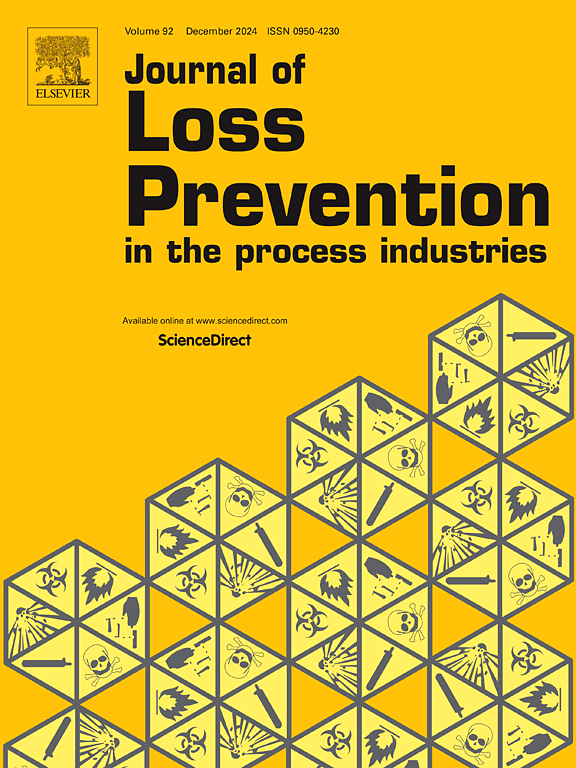Using hydrate foam to extinguish petroleum product tank fires
IF 4.2
3区 工程技术
Q2 ENGINEERING, CHEMICAL
Journal of Loss Prevention in The Process Industries
Pub Date : 2025-06-26
DOI:10.1016/j.jlp.2025.105730
引用次数: 0
Abstract
Firefighting foam is the most effective means to suppress fires involving liquid petroleum products. Its key ingredient, perfluorooctane sulfonic acid, takes a long time to degrade, thus causing serious damage to the environment. Another option is to use fluorocarbon surfactants or silicone surfactants. These solutions are less effective in fighting fires. This research presents a conceptual framework of suppressing fires involving liquid petroleum products using hydrate foam. When hydrate foam interacts with fire, carbon dioxide released in the dissociation of hydrate displaces the oxidizer from the combustion zone. Hydrate foam absorbs the heat released in combustion, thus cooling the petroleum product and the tank. It creates a buffer zone between the oxidizer and petroleum product surface. This zone limits the combustion front spread. The conducted experiments confirmed the high efficiency of hydrate foam. Optimal parameters were determined for efficient and economical operation of hydrate-based foam fire suppression systems. The data obtained were used to develop a conceptual framework of a fire suppression system for petroleum products in storage tanks. The economic efficiency of the proposed technology was estimated. Mathematical equations were derived to predict the required volume of hydrate to suppress the burning of petroleum products.

利用水合物泡沫扑灭成品油罐火灾
灭火泡沫是扑灭涉及液体石油产品火灾的最有效手段。其关键成分全氟辛烷磺酸需要很长时间才能降解,从而对环境造成严重破坏。另一种选择是使用氟碳表面活性剂或硅酮表面活性剂。这些方法在灭火时效果较差。本研究提出了一种利用水合物泡沫扑灭涉及液体石油产品火灾的概念框架。当水合物泡沫与火相互作用时,在水合物解离中释放的二氧化碳将氧化剂从燃烧区取代。水合物泡沫吸收燃烧时释放的热量,从而冷却石油产品和储罐。它在氧化剂和石油产品表面之间形成一个缓冲带。这个区域限制了燃烧前缘的扩散。实验证实了水合物泡沫的高效性。确定了水合泡沫灭火系统高效经济运行的最佳参数。所获得的数据用于开发储罐中石油产品灭火系统的概念框架。对该技术的经济效益进行了评价。推导了抑制石油产品燃烧所需水合物体积的数学方程。
本文章由计算机程序翻译,如有差异,请以英文原文为准。
求助全文
约1分钟内获得全文
求助全文
来源期刊
CiteScore
7.20
自引率
14.30%
发文量
226
审稿时长
52 days
期刊介绍:
The broad scope of the journal is process safety. Process safety is defined as the prevention and mitigation of process-related injuries and damage arising from process incidents involving fire, explosion and toxic release. Such undesired events occur in the process industries during the use, storage, manufacture, handling, and transportation of highly hazardous chemicals.

 求助内容:
求助内容: 应助结果提醒方式:
应助结果提醒方式:


